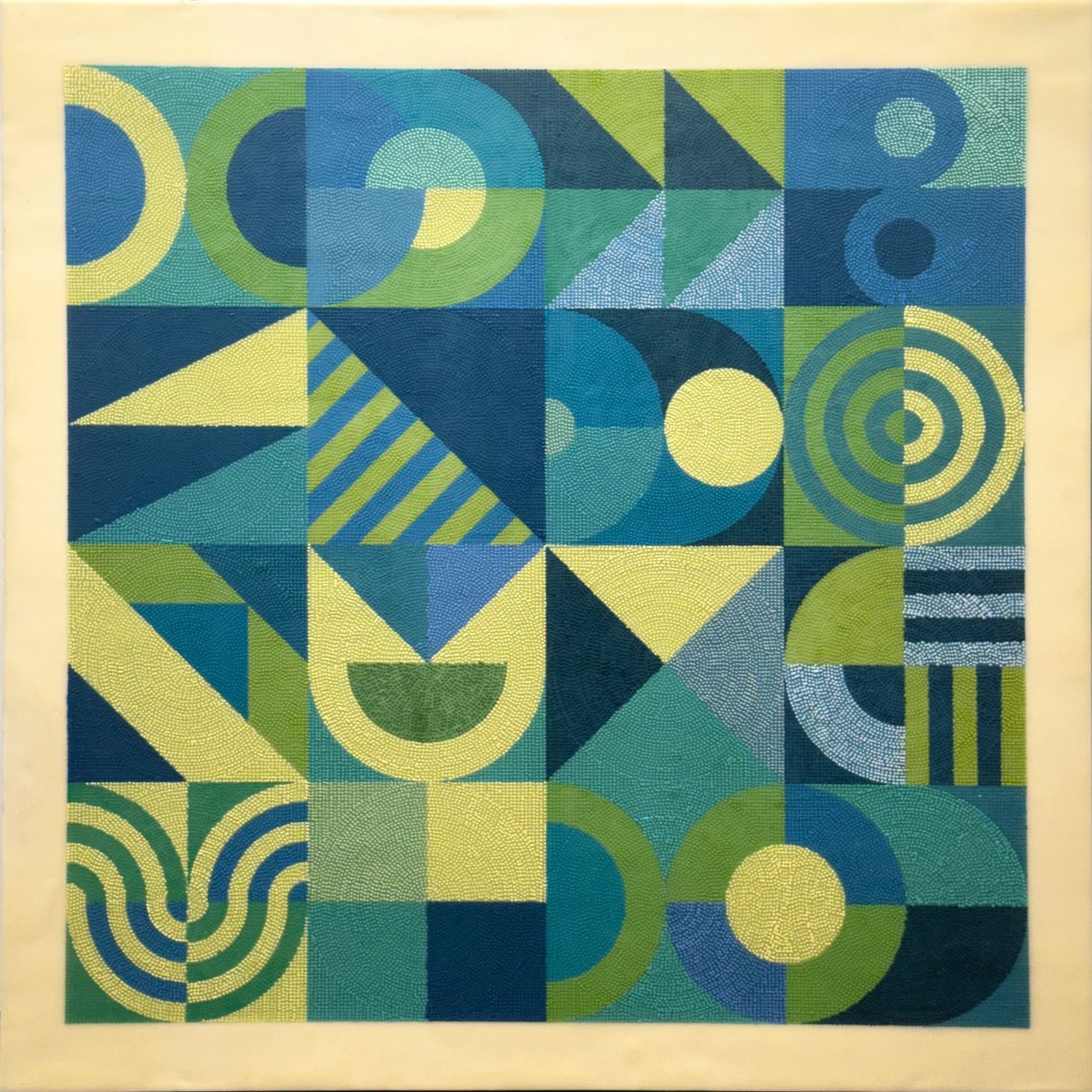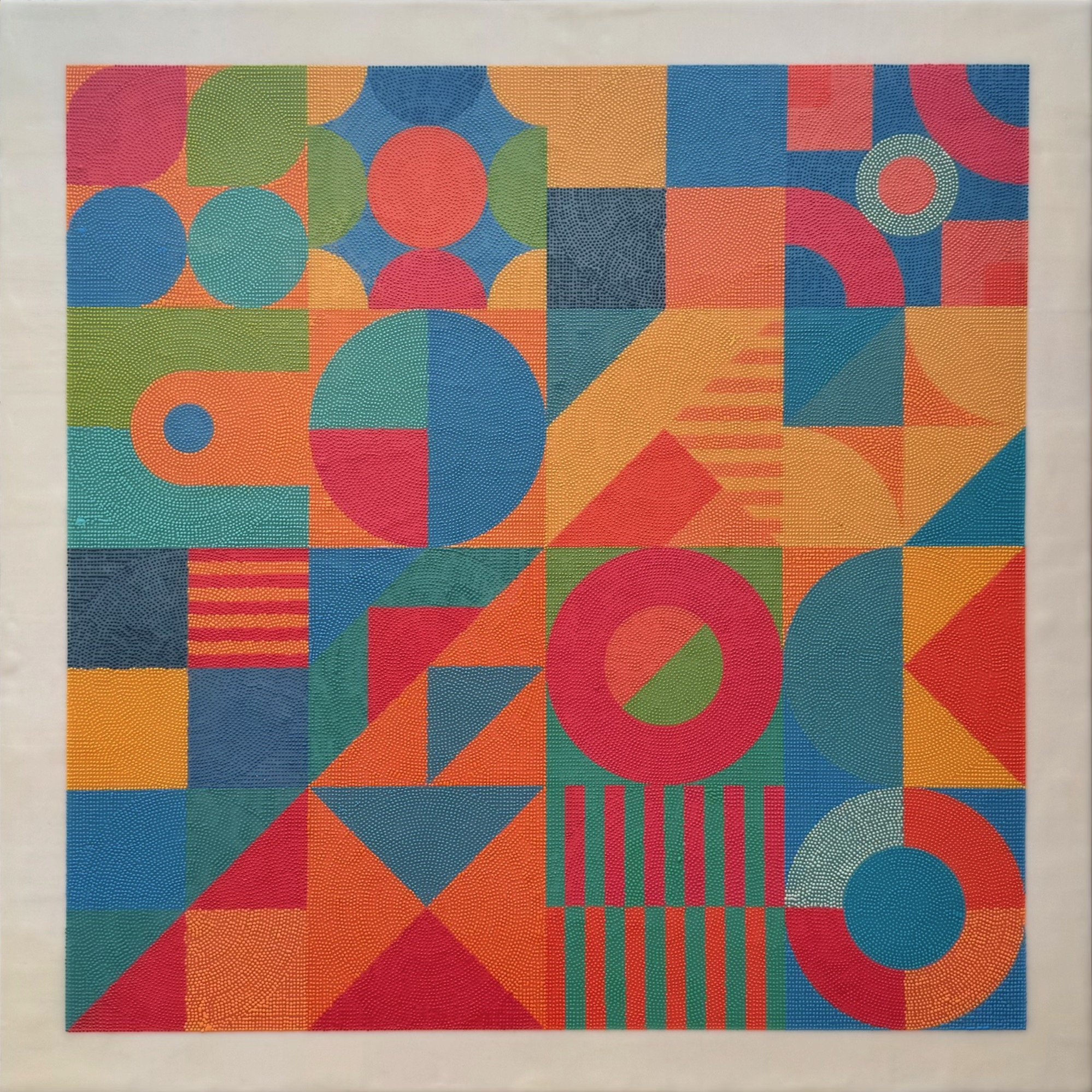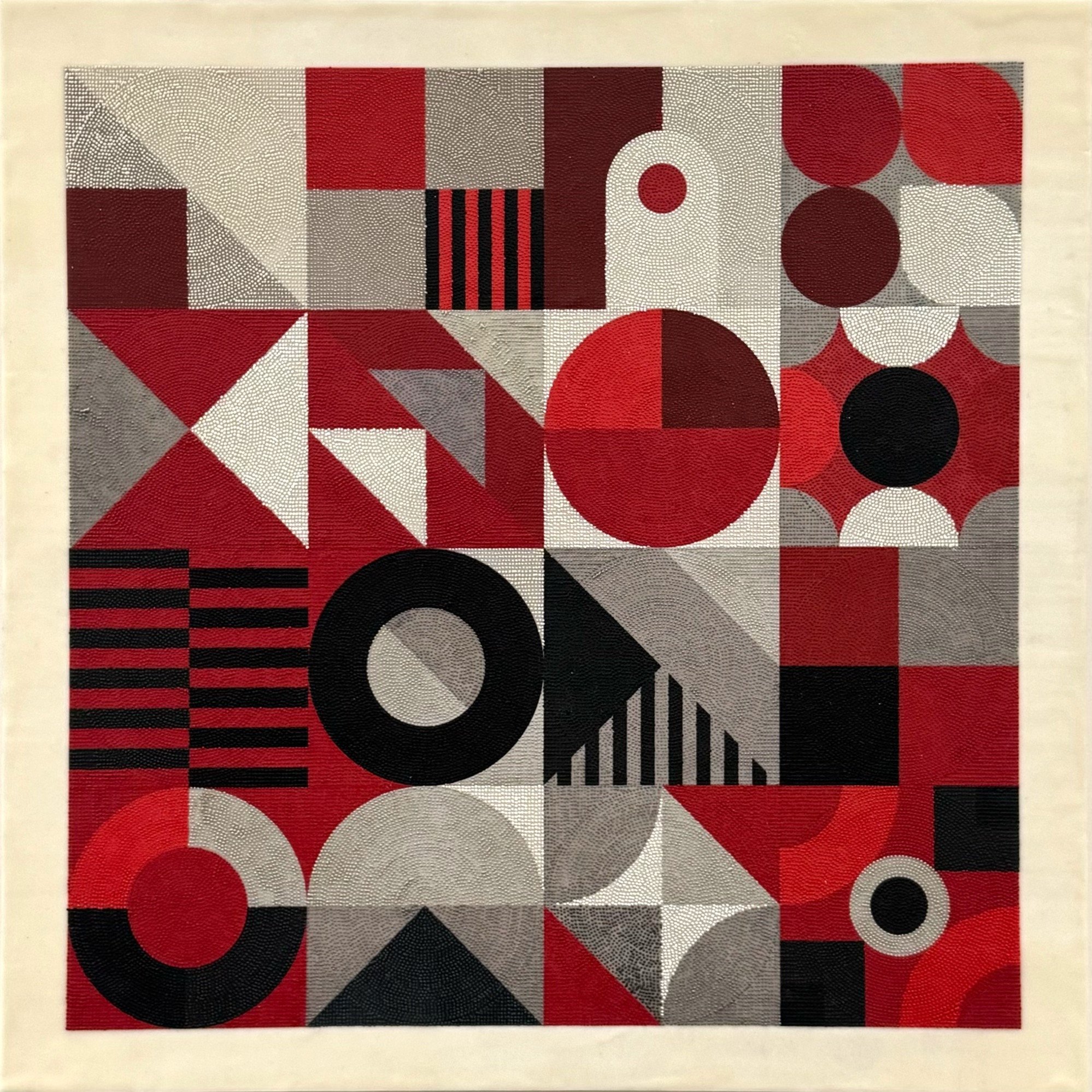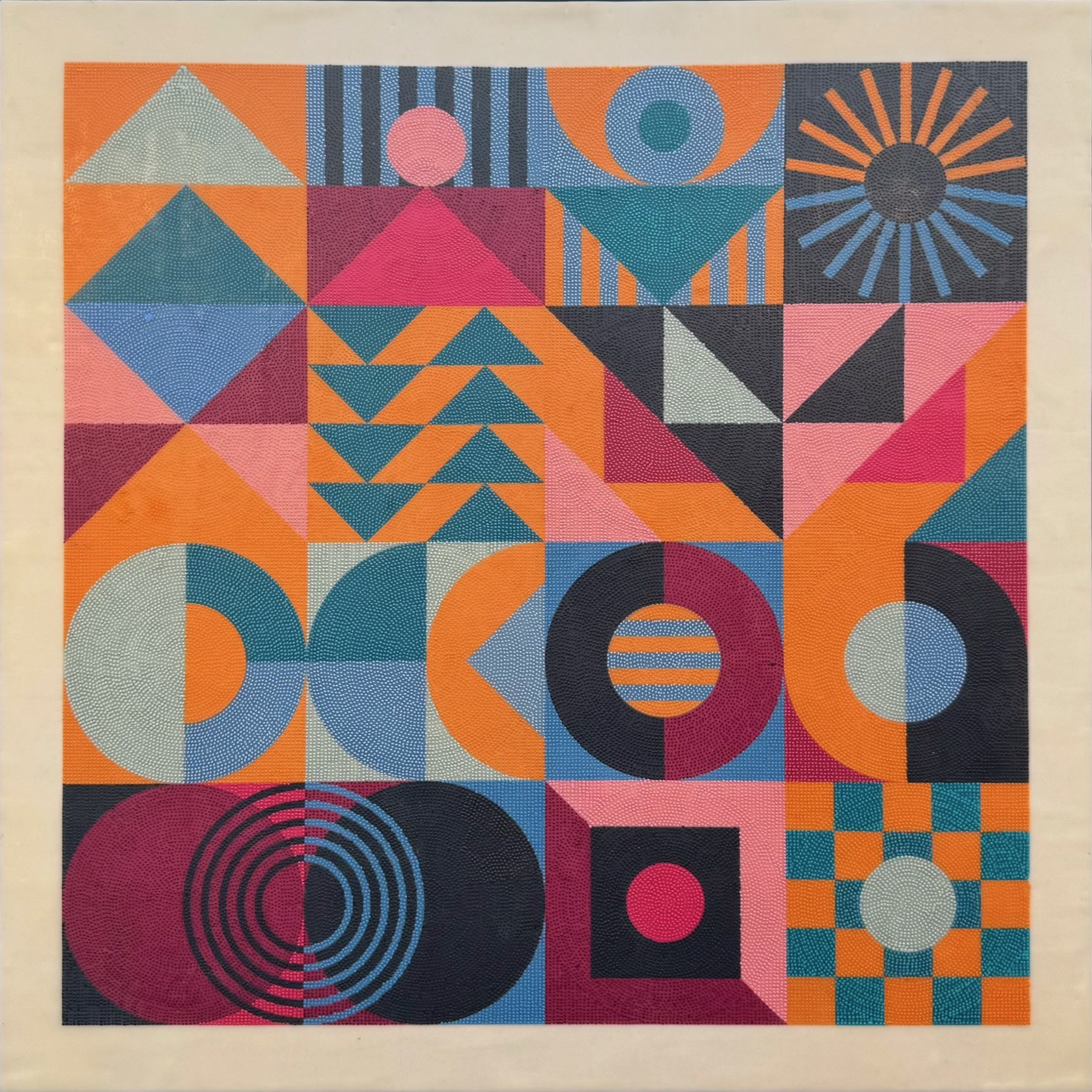Geometry in Wax: A Bold Dialogue with Bauhaus
The Bauhaus movement, founded in 1919 in Weimar, Germany by architect Walter Gropius, was more than an art school—it was a radical rethinking of how art and design could shape the world. Rooted in the belief that art, craft, and industry should work hand in hand, Bauhaus rejected decorative excess in favor of clean lines, functional forms, and a design language built around geometry and clarity. Triangles, circles, squares, and curves—all became foundational building blocks of a new modern visual style.
What’s fascinating is how much of this aesthetic draws directly from traditional craft practices—including quilting. Bauhaus designers embraced the bold, repeating forms found in classic quilt blocks, reinterpreting them through a modernist lens. One pattern in particular—the Drunkard’s Path—has been a personal favorite of mine. Its signature curve-and-square motif was echoed in countless Bauhaus compositions, offering a balance of motion and structure that felt both grounded and fluid.
That connection between the hand-stitched and the modernist has become a throughline in my own creative practice. In my series of 4x4 variations, I draw inspiration from Bauhaus geometry but bring my own twist: bold color contrasts and encaustic texture. Using pigmented wax, I layer colors and apply delicate dots with a stylus, creating surfaces that are not only visually vibrant but richly tactile.
These encaustic dots add a kind of dimensional rhythm, echoing the stitchwork of quilting while turning each composition into something alive and dynamic. They invite the viewer to linger, to trace the lines, to feel the push and pull between structure and spontaneity.
Bauhaus taught us that beauty lies in simplicity—and that modernism can honor tradition while moving it forward. That’s the spirit I aim to bring to each piece: rooted in history, made contemporary through wax, color, and touch.





